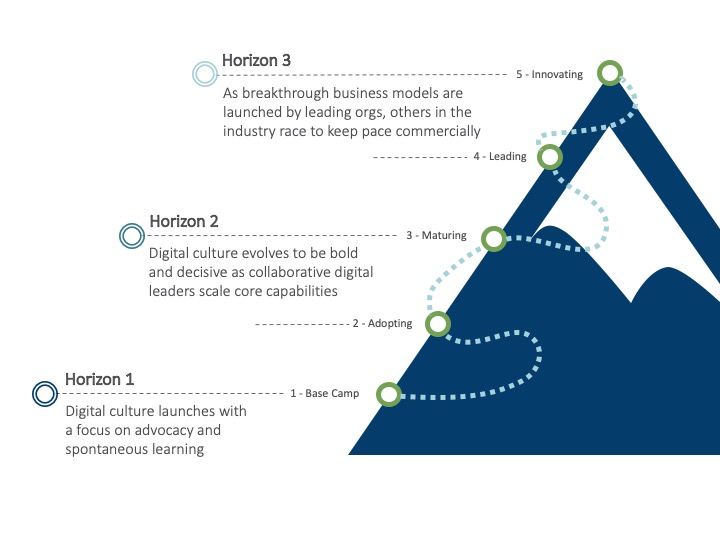The challenge that COVID-19 presented for U.S. healthcare providers has been well-documented: a front-line role in fighting a mystifying and deadly virus; a sudden halt in elective procedures and its impact on revenues; and the rapid adoption of telehealth and other remote care options coupled with a corresponding decrease in in-person visits.
In the wake of these changes, providers rapidly adapted to more agile and virtual care delivery models. Payers evolved their reimbursement models to support these new models. Life sciences companies worked (and continue to do so) at hyperspeed and with unprecedented levels of collaboration to seek cures and vaccines.
But what can the healthcare industry expect going forward, after the COVID crisis ends? What changes are here to stay? And how can providers in particular take a leadership position for the future? To answer these questions, this summer we spoke with more than a dozen board directors, CEOs and executives from across the healthcare industry about the COVID crisis and their views on its impact on providers’ future. These conversations form the basis for a three-part series we plan to share in the coming weeks.
In this first article of the series, we look at what COVID-era trends may outlive the pandemic and what that means for healthcare providers and their digital readiness.
Telehealth is here to stay
When the COVID shutdown took hold in March, telehealth immediately moved to the forefront of care delivery. Payers paved the way with a vast expansion of coverage for virtual visits, and consumers sheltering in place embraced virtual options to receive medical care in the face of the pandemic. According to the executives we spoke with, payers appear to be prepared to extend telehealth’s expansion past this current pandemic.
With payers and consumers on board, providers fast adopted remote care options as patients avoided in-person visits. From teledentistry to teleradiology to remote behavioral health services, virtual care is proving useful in many situations where an in-person visit is not explicitly necessary—for example in quick follow-up visits for previous procedures.
The domino effect is that a model that embraces remote care could bring fundamental changes to how this sector does business. If traditional geographical restrictions on delivering care eroded — especially if rules on cross-state reimbursements were eased — could local providers suddenly have to compete with centralized practices hundreds of miles away from their patients? Considering many providers’ expansive (and often expensive) physical footprints, and the whole notion of the community healthcare provider could face a complete rethinking.
Healthcare providers’ digital journey
The underpinning of this changing world is digitization—adopting and incorporating the tools and then using them to compete commercially. In our work with healthcare organizations seeking to build their digital capabilities, we compare the journey to a long, winding mountain expedition — gaining a foothold and slowly ascending, albeit with many challenges along the way.
Overall, we have identified three horizons on that journey.

-
In the first horizon, at the “base” of the mountain, is where an organization is launching a digital culture, typically with a focus on advocacy and spontaneous learning. Usually leaders aim to bring excitement and energy to efforts to push them forward, although the pandemic has driven it for many organizations in 2020. At this point, digital is usually housed under another function such as IT or strategy.
-
The second horizon focuses on scale, with digital culture evolving to become bold, decisive, collaborative source to scale core new capabilities. For providers that have implemented telehealth recently, this horizon is next — with leaders focusing less on operationalizing digital and more on evangelizing it to the whole organization.
-
In the last horizon, digital leaders are driving the commercialization of their capabilities. The focus turns outward, with digital innovation not just an internal driver of better results, but a part of the company’s core business model and a key market differentiator. The leading organizations can push forward with speed and innovation that give it a strong competitive advantage.
Finding leaders for your digital future
As the trends outlined above take hold, strong leadership will be crucial. While the right person for the job will depend in part on where your organization is in terms of digital maturity, long-term success may go to those providers that understand how to make digital the centerpiece of a competitive advantage in the future.
So how do you find the right people?
Consider new titles and roles. Your C-suite may need more than the standard titles; more organizations are considering roles dedicated to meeting patient needs in the hospital. These might include chief experience officer, chief patient experience officer, chief customer officer or something similar. Whatever the case, this is a person whose goal is engaging patients in a better way.
Look for commercial leaders. Regardless of roles, pushing forward into the next digital horizon requires not simply IT leaders with a technical knowledge, but rather commercial leaders who understand how digital customer engagement will increase results. Traditional healthcare metrics like “heads in beds” will matter less when so many more visits are conducted — so how do you embed culture change to think differently?
Search outside of healthcare. With a greater focus on the commercial side, your next leader may come from outside of healthcare. Consumer and e-commerce are just a couple of industries where healthcare providers could find future leaders.